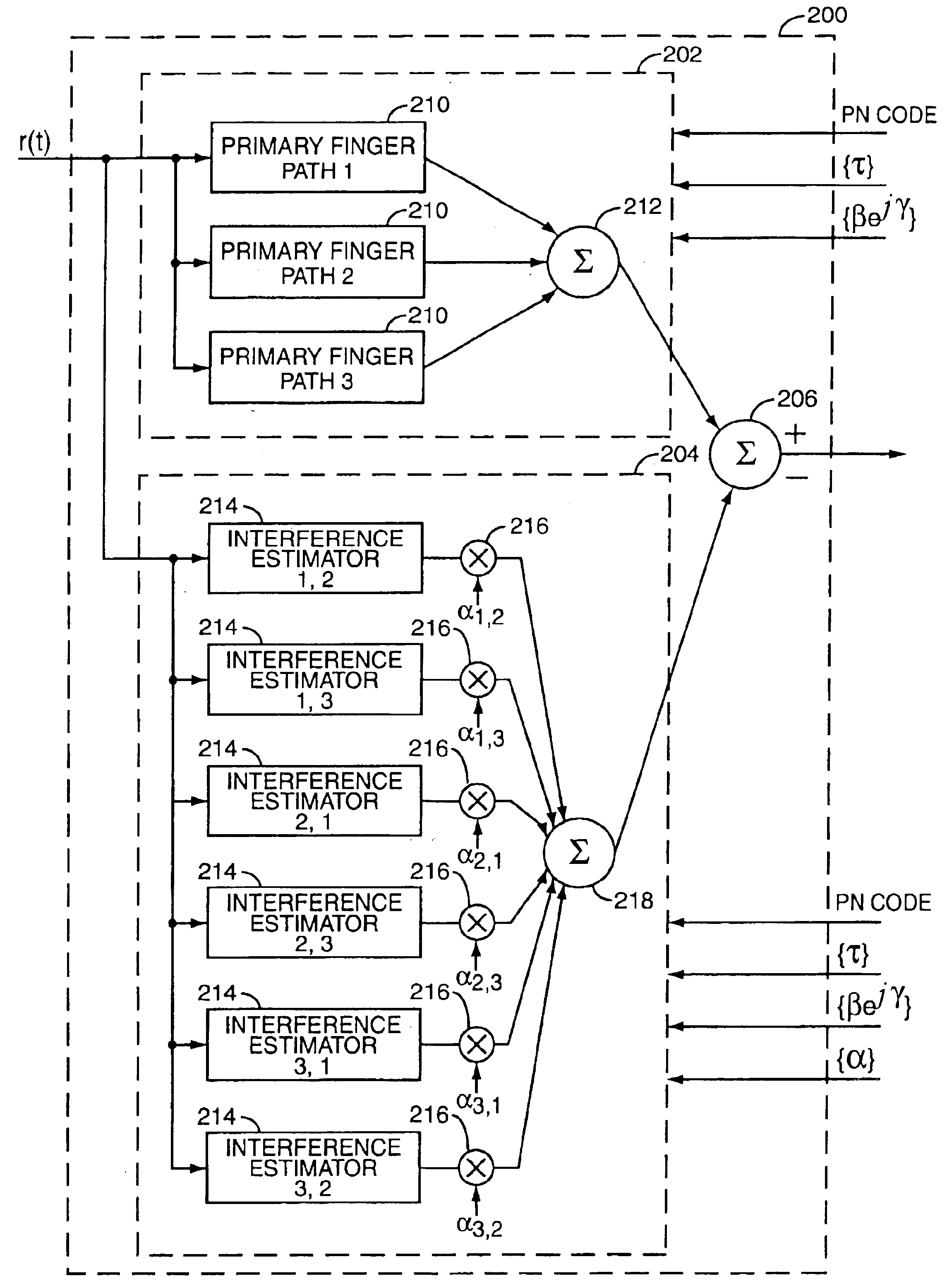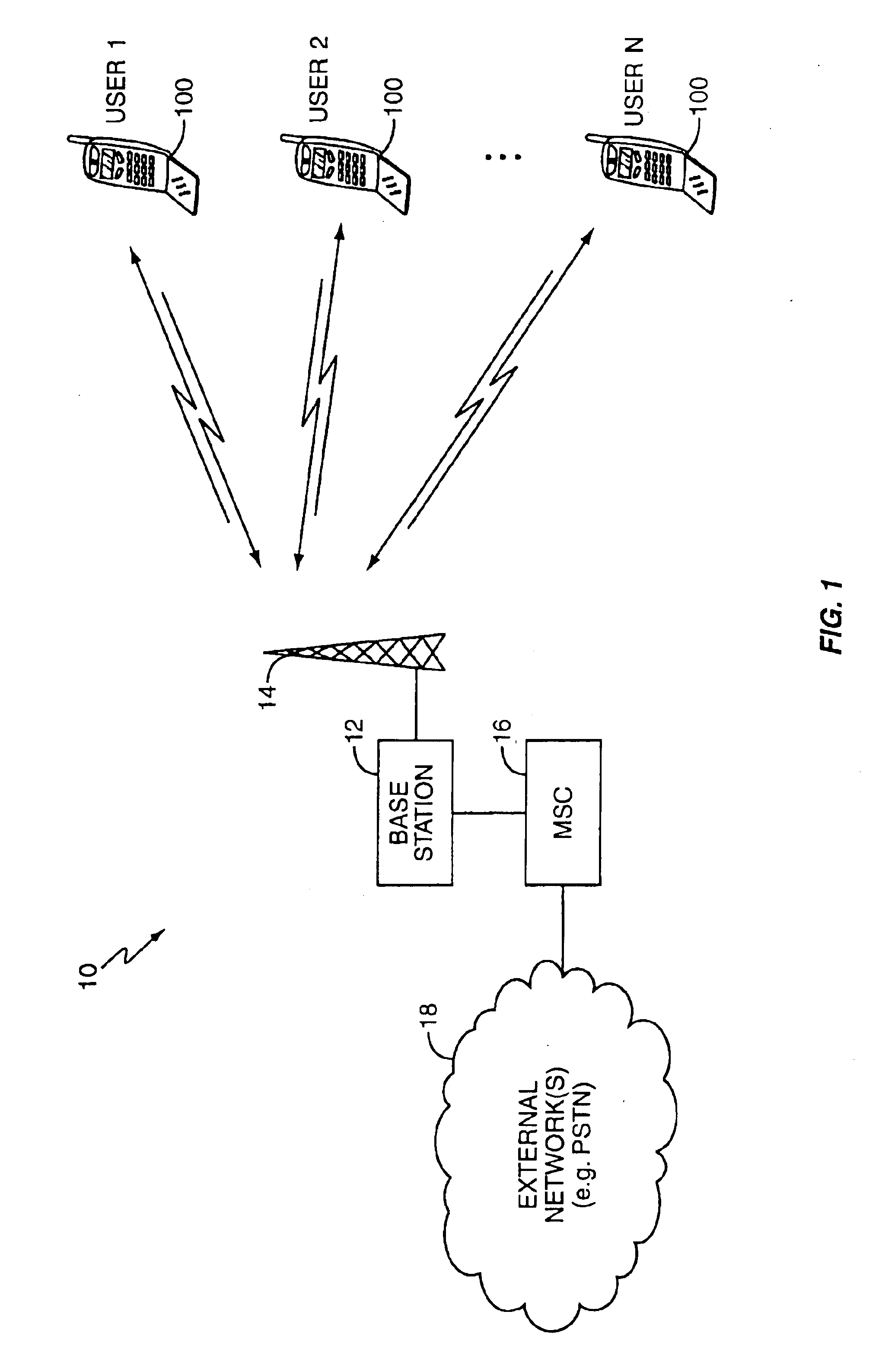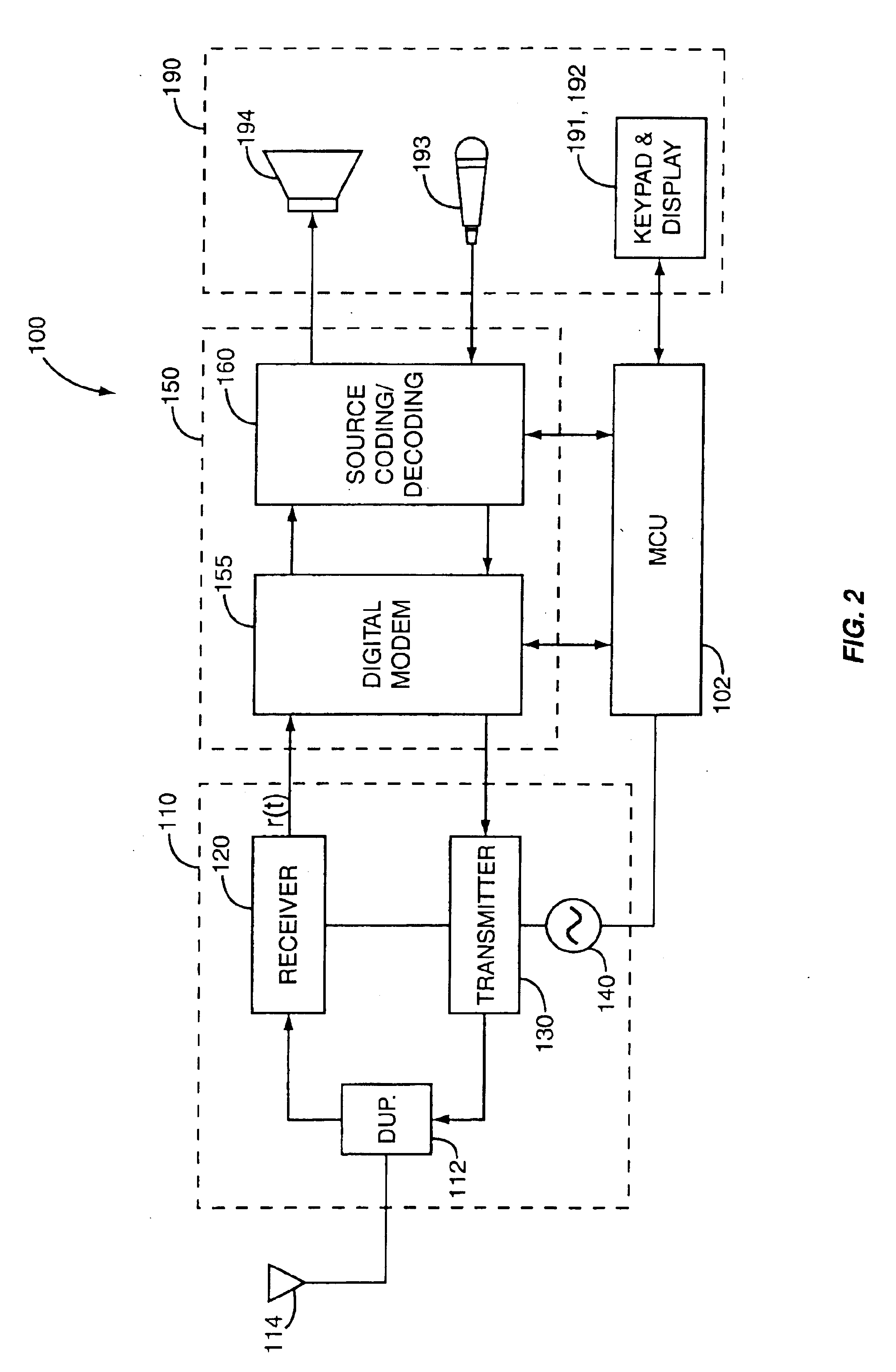Multipath interference reduction for a CDMA system
- Summary
- Abstract
- Description
- Claims
- Application Information
AI Technical Summary
Benefits of technology
Problems solved by technology
Method used
Image
Examples
Embodiment Construction
Referring now to FIG. 1, the present invention will be discussed in the context of a wireless communications network supporting over-the-air communications between mobile terminals 100 and stationary receivers generally known as base stations. For simplicity, the wireless communications network is depicted with only one base station 12 and associated antenna 14; however, a practical wireless communications network will include multiple base stations 12 to provide communications service to an extended area. The base station 12 connects to a mobile switching center (MSC) 16 that connects with one or more external networks 18, such as the Public Switched Telephone Network (PSTN), the Integrated Services Digital Network (ISDN), and / or the Internet. The base station 12 is located in and provides wireless communication services to a geographic region referred to as a cell. Generally, there is one base station 12 for each cell within a given wireless communications network. The wireless co...
PUM
 Login to View More
Login to View More Abstract
Description
Claims
Application Information
 Login to View More
Login to View More - R&D
- Intellectual Property
- Life Sciences
- Materials
- Tech Scout
- Unparalleled Data Quality
- Higher Quality Content
- 60% Fewer Hallucinations
Browse by: Latest US Patents, China's latest patents, Technical Efficacy Thesaurus, Application Domain, Technology Topic, Popular Technical Reports.
© 2025 PatSnap. All rights reserved.Legal|Privacy policy|Modern Slavery Act Transparency Statement|Sitemap|About US| Contact US: help@patsnap.com



